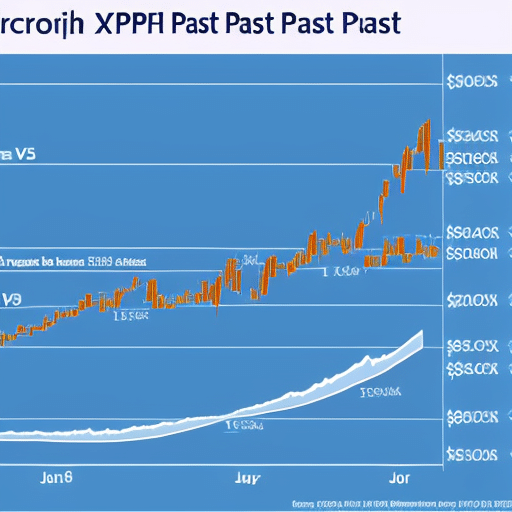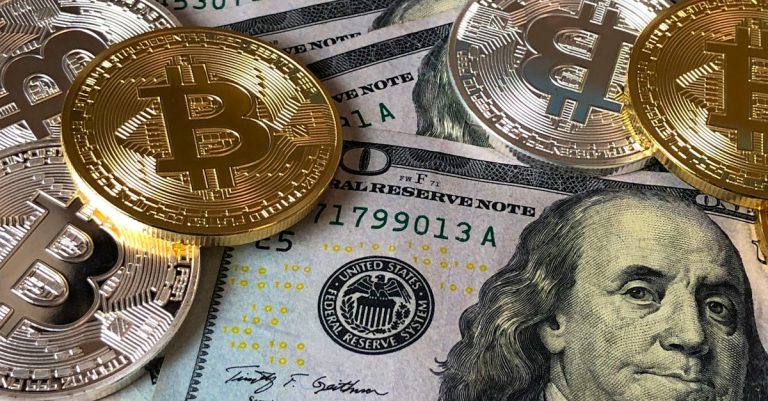Xrp Price Manipulation Detection
Price manipulation is a serious issue for investors in the cryptocurrency market, as it can significantly influence the value of their digital assets. XRP is no exception and is particularly vulnerable to price manipulation due to its high liquidity and global reach. In this article, we will discuss the signs of price manipulation in relation to XRP, methods used to detect such activities, regulatory measures available to protect investors from fraudsters, and best practices that investors should follow. We will also explore what actions investors should take if they suspect that their holdings are being manipulated in any way.
What is Price Manipulation?
Price manipulation can be defined as a deliberate attempt to influence the price of an asset by misusing information or other tactics. This market influence, often done to take advantage of investors’ expectations, is used by individuals and groups to create artificial demand and hype in a market. Through this process, they are able to manipulate the asset’s price for their own gain. Market sentiment also plays a role in price manipulation as certain traders may act on rumors or false news about the asset. As such, it is important that investors remain vigilant when investing in order to avoid falling prey to any form of market manipulation. In addition, signs of potential price manipulation should be monitored closely as these can indicate potential fraudulent practices within the marketplace.
Signs of Price Manipulation
Price manipulation is an illegal practice used by traders to artificially inflate or deflate the price of a security. Unusual trading volume and unusual price movements are two signs of possible price manipulation. Trading volume can be monitored to detect rapid changes, which may indicate insider trades or other forms of market manipulation. Price movements can also be monitored for sudden and unexpected fluctuations in order to identify potential cases of market manipulation.
Unusual trading volume
Unusual trading volume has been identified as a potential indicator for price manipulation in the XRP market. An increase in trading activity can be indicative of speculation, insider trading or other activities that may be influencing prices beyond normal market conditions. Analyzing the trading volumes over time can provide insight into the presence of any suspicious activity and help to identify whether large investors are exerting influence on prices through their trades. Furthermore, it is important to consider how unusual increases in volume compare with changes in price movements, which may also be used as another indicator of price manipulation. Examining these two variables together can provide further evidence of market manipulation. As such, unusual trading volume should always be taken into consideration when attempting to detect possible cases of price manipulation in the XRP market.
Unusual price movements
Analyzing changes in trading activity can provide further insight into potential occurrences of market manipulation, as unexpected shifts in price patterns may indicate a concerted effort to influence the XRP market. Unusual price movements can be caused by a variety of factors, including:
- High frequency trading: Short-term traders who buy and sell large volumes of an asset within a short time frame may cause prices to fluctuate more than usual.
- Insider trading: Individuals with access to confidential information about an asset’s value or upcoming news may attempt to take advantage of this information for their own financial gain.
Both high frequency trading and insider trading are illegal activities that can lead to significant fluctuations in asset prices. Understanding these dynamics is essential for regulators seeking to detect potential cases of market manipulation. The next step is to explore the impact such manipulation has on XRP prices.
Impact of Price Manipulation on XRP
The potential consequences of price manipulation on XRP can be far-reaching and devastating. Price manipulation can have a significant impact on investor psychology, as it can cause investors to become more concerned about their investments and less confident in the cryptocurrency market. This could lead to short-term volatility or longer periods of low confidence that may affect prices for extended periods of time. Additionally, insider trading may also be seen as a form of price manipulation, in which privileged information is used to gain an advantage over other traders or investors. In this case, the use of such privileged information could cause serious damage to the reputation of both the involved parties and the entire crypto market as a whole. Consequently, these actions could lead to significant losses for all participants in the market. As a result, it is important that regulators take steps to detect and prevent any forms of price manipulation on XRP before they become too widespread or damaging. Transitioning into the subsequent section without using ‘step’, techniques for detecting price manipulation must be explored in order to ensure long-term stability for XRP and other cryptocurrencies.
Techniques to Detect Price Manipulation
Data analysis, statistical analysis, and graphical analysis are three common techniques used to detect price manipulation. In data analysis, the analyst looks for patterns or anomalies in a given dataset that may indicate malicious behavior. Statistical analysis involves using mathematical models to generate hypotheses about market behavior which can then be tested empirically. Finally, graphical analysis is the use of visual representations such as charts and graphs to identify trends and outliers in financial data. Together these methods form a powerful toolkit for detecting potential price manipulation activities.
Data analysis
Drawing attention to key patterns, the data analysis reveals valuable insights into potential price manipulation of XRP. Market sentiment and insider trading are two factors that can be examined for clues into potential price manipulation. By studying the market trends of XRP, analysts can gain insight into any external forces that may have an effect on its pricing. Additionally, by analyzing possible insider trading activity, researchers can identify any potential cases of price manipulation within the system itself. In either case, a detailed data analysis can provide valuable information about the state of XRP and its potential risks. Through this process, analysts can develop strategies to protect users from malicious activities or unethical practices in the XRP market. From this data analysis, statistical analysis is then used to further investigate any instances of suspicious behavior in order to confirm or deny any claims of price manipulation.
Statistical analysis
Statistical analysis can provide further evidence to help identify potential cases of price manipulation within the XRP market. Quantitative analysis and predictive models can be applied to investigate patterns in the data, such as correlations between different variables or changes in trends over time. This type of analysis can also help measure the impact of certain events on price movements, such as news announcements or major trades. By looking at these relationships, it is possible to identify any irregularities that may indicate manipulation attempts. Through this type of statistical evaluation, it is possible to detect any abnormalities in price movements that could point towards possible cases of market manipulation.
Graphical analysis can then be used to visualize the results from the statistical analysis in order for patterns and trends to be detected more easily and quickly by researchers and regulators alike.
Graphical analysis
Visualization of the data can be used to examine relationships between variables, as well as changes in trends over time, which may reveal irregularities that could indicate potential manipulation attempts. Graphical analysis is a powerful tool to assess XRP price movements for evidence of insider trading or other forms of market manipulation such as pump and dump schemes. Specifically, it can:
- Illustrate arbitrage strategies employed by traders for maximizing profits;
- Help identify price bubbles or drops caused by large orders;
- Analyze volume-price patterns to detect insider trading activities; and
- Detect suspicious transactions related to wash trading activities.
These techniques are important components in detecting market manipulations with XRP prices, but they alone may not be sufficient due to the complexity of the markets and the lack of transparency in many cases. To further protect investors from fraudulent activities, regulatory measures must also be taken into consideration.
Regulatory Measures to Prevent Price Manipulation
Regulatory measures have been implemented to deter price manipulation in the XRP market. Dark pools, which are private exchanges that allow big investors to buy and sell large orders without publicly revealing their positions, are one such measure. Insiders trading is also regulated by the SEC who can take legal action against those found guilty of this offense. Furthermore, the implementation of automated surveillance systems helps detect any suspicious activity relating to price manipulation. For example, if an investor accumulates a large amount of XRP or attempts to manipulate its price through transactions made across different trading platforms, these systems will alert authorities for further investigation. Such efforts help maintain transparency and fairness in the crypto markets for all participants.
The enforcement of such regulations is key in preventing price manipulation in XRP markets but it is also important that investors understand best practices when trading cryptocurrencies. This includes doing thorough research into the technology behind the cryptocurrency they wish to invest in as well as understanding current market trends and sentiments before investing any capital into them. By following these guidelines investors can make more informed decisions about their investments and better protect themselves from potential scams or frauds associated with cryptocurrency investment activities.
Best Practices for Investors
Investors should take a proactive approach to their investments in cryptocurrencies, engaging in best practices that emphasize research into underlying technology and an understanding of current market trends and sentiment. Risk management is key when investing in cryptocurrency markets, as the volatile nature of prices can lead to severe losses if not properly managed. Market sentiment should also be taken into account when investing, as it can provide insight into the emotions and opinions of investors which may affect price. Furthermore, investors should also pay attention to other external factors like government regulation or news events which could have an impact on prices. By taking these steps, investors can position themselves to maximize returns while minimizing risk in their XRP investments. To further protect against potential price manipulation, it is important for investors to stay informed about any suspicious activities or market movements that could indicate foul play.
What to Do if You Suspect Price Manipulation
If suspicious market movements are observed, it is important to take steps to protect investments in cryptocurrencies. Depending on the type of manipulation and the jurisdiction in which it occurs, there may be both legal and financial implications for those involved. The most common forms of price manipulation include insider trading, wash trading, spoofing, front-running, and pump-and-dump schemes. Each of these activities can have serious consequences if not addressed promptly. In order to mitigate potential losses due to price manipulation, investors should ensure that they understand the regulations surrounding cryptocurrency trading in their jurisdiction and remain vigilant for any signs of suspicious activity. Additionally, they should research any companies or individuals with whom they are considering conducting transactions to ensure that no insider knowledge is being used to manipulate prices. By taking preventative measures against price manipulation and remaining informed about current regulations and practices related to cryptocurrency investing, investors can reduce their risk exposure when dealing with digital assets like XRP.
Frequently Asked Questions
How does price manipulation affect the cryptocurrency market?
Price manipulation has serious implications for investor protection and market regulation within the cryptocurrency sector. Analyzing how it affects the market is essential to understand its impact on stakeholders, prices, and liquidity.
How do I know if I’m investing in a coin that is subject to price manipulation?
Investing in a coin subject to price manipulation can be recognized through increased price volatility and changes in market sentiment. Analyzing these factors alongside other technical indicators such as volume and momentum can help investors make informed decisions.
What specific techniques can I use to detect price manipulation?
Analyzing price volatility, market analysis, and statistical trends can be used to detect potential manipulation of a coin’s price. Regulatory oversight is also necessary to ensure that the markets remain transparent and free from manipulation.
Are there any best practices I should follow as an investor to protect myself from price manipulation?
Investors should be aware of price volatility when trading, and employ a variety of strategies to protect themselves from potential manipulation. Utilizing stop-loss orders, diversifying investments, and using limit orders are all advisable practices that can help manage risk and minimize losses.
What are the consequences of price manipulation for cryptocurrency exchanges?
Cryptocurrency exchanges are significantly impacted by investor psychology and market manipulation, with studies showing losses of up to 25% in trading volumes. Unethical traders may exploit these vulnerabilities to manipulate prices, resulting in financial losses for both exchange operators and investors.







 Bitcoin
Bitcoin  Ethereum
Ethereum  Tether
Tether  XRP
XRP  USDC
USDC  Wrapped SOL
Wrapped SOL  TRON
TRON  Lido Staked Ether
Lido Staked Ether  Dogecoin
Dogecoin  Figure Heloc
Figure Heloc  Cardano
Cardano  WhiteBIT Coin
WhiteBIT Coin  Bitcoin Cash
Bitcoin Cash  Wrapped stETH
Wrapped stETH  Wrapped Bitcoin
Wrapped Bitcoin  USDS
USDS  Wrapped eETH
Wrapped eETH  Binance Bridged USDT (BNB Smart Chain)
Binance Bridged USDT (BNB Smart Chain)  Chainlink
Chainlink  LEO Token
LEO Token  Zcash
Zcash  Monero
Monero  WETH
WETH  Stellar
Stellar  Coinbase Wrapped BTC
Coinbase Wrapped BTC  Ethena USDe
Ethena USDe  Hyperliquid
Hyperliquid  Litecoin
Litecoin  Canton
Canton  Avalanche
Avalanche  Sui
Sui  Hedera
Hedera  USDT0
USDT0  sUSDS
sUSDS  Dai
Dai  Shiba Inu
Shiba Inu  Toncoin
Toncoin  World Liberty Financial
World Liberty Financial  Uniswap
Uniswap  PayPal USD
PayPal USD  Cronos
Cronos  Ethena Staked USDe
Ethena Staked USDe  USD1
USD1  Mantle
Mantle  Polkadot
Polkadot  Rain
Rain  MemeCore
MemeCore  Bitget Token
Bitget Token